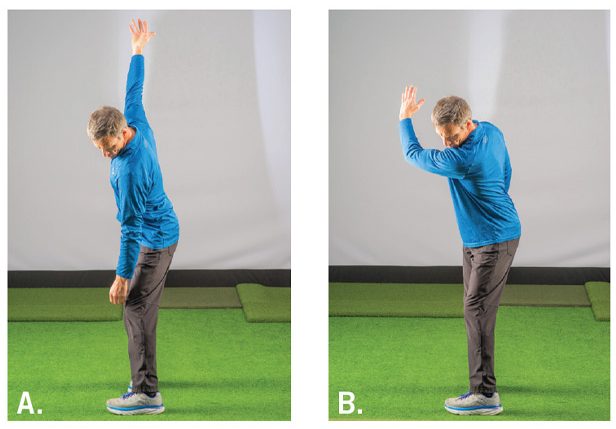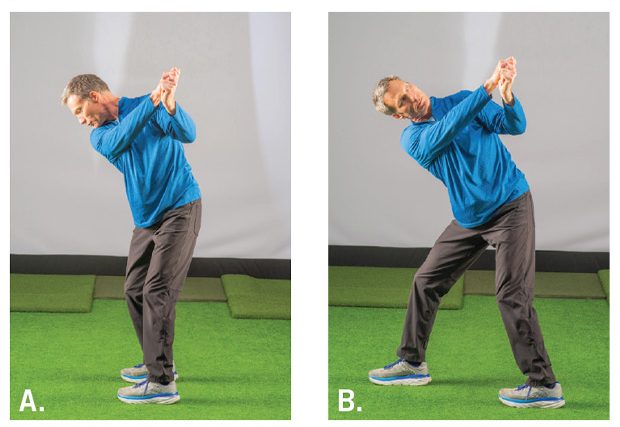SENIORS TAKE THE STAGE AT COLORADO SENIOR OPEN IN AUGUST
What to know about this year’s Colorado Senior Open
By Jamie White/Photographs by E.J. Carr
Coming out of hibernation from the Colorado winter means preparing effectively with a functional golf mobility program. As a Gray Institute Functional Golf Specialist, I utilize a program with my players that encompasses more than 240 exercises, covers 66 transformational zones and progresses players in stages through mobility, stability, strength, endurance and recovery. This same program has been highlighted on the Golf Channel’s Driven, which follows Oklahoma State University’s golf team.
The moves here mirror the four stages of the golf swing. While representing only a fraction of what I teach, they should get you moving in the right direction this spring.


A. From the address position, raise arms overhead and lunge laterally right with trail leg and flex spine to the left towards the target, keeping arms and spine angle the same as address.
B. From that position, take trail leg and cross over lead leg, flexing the spine and arms to the right.


A. Get into setup position and rotate into backswing.
B. Lead leg will internally rotate over the trail foot, and trail arm will load into the top of the swing creating greater hip mobility and larger thoracic spine rotation.


A. Start with arms at shoulder height in address position. With trail foot and trail arm step forward over lead side.
B. Lead side arm will flex overhead toward the golf ball creating side bend and flexion in the spine. (This is a great mobility drill to feel the weight shift for better impact and better spine angles.)


A. Start at address position, let the arms pass the torso and try to extend arms high.
B. Take trail leg and do a forward lunge toward the ball. This will create greater mobility in the torso and shoulders. (Note: This is crucial for turning through the ball and allowing the big muscles to sequence the swing and eliminate flipping with the hands.)
Jamie White is co-owner of Denver Golf Performance, a facility dedicated to fitness, instruction, nutrition and recovery. A Titleist Performance Institute Level 3 Golf, Fitness and Junior Development coach, he specializes in bridging the gap between fitness and instruction for uncompromised results.
This article was also featured in the Spring 2020 issue of Colorado AvidGolfer.
Colorado AvidGolfer is the state’s leading resource for golf and the lifestyle that surrounds it, publishing eight issues annually and proudly delivering daily content via coloradoavidgolfer.com. Follow us on Twitter, Facebook and Instagram.
What to know about this year’s Colorado Senior Open
Help your game this summer at the Insiprato Colorado Open